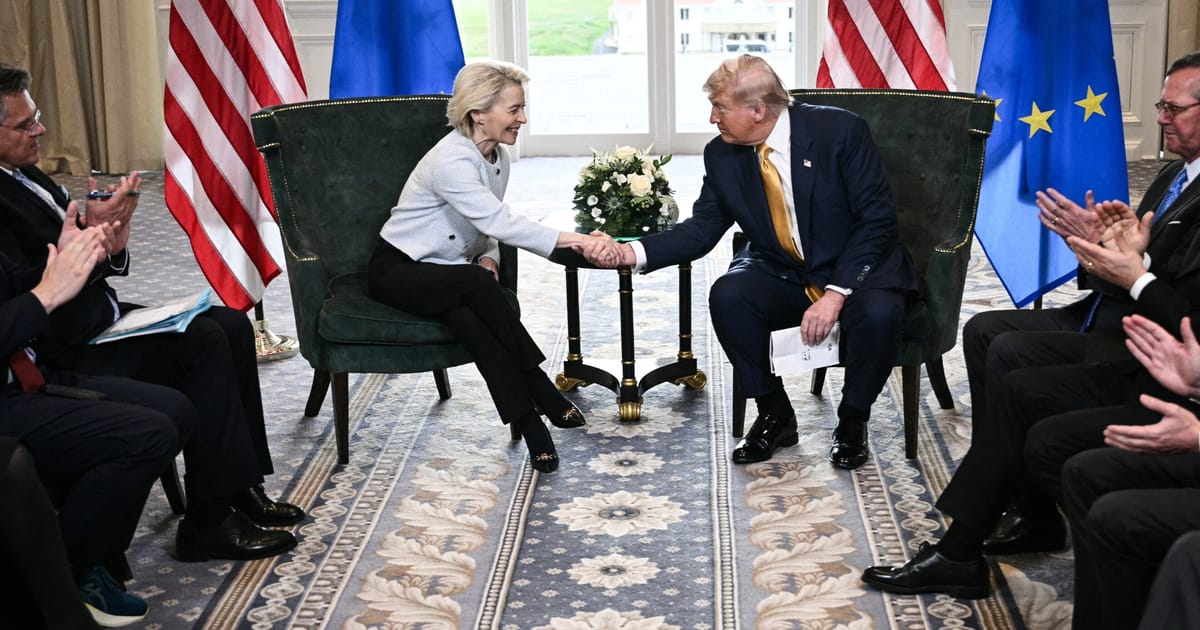

In a world where the global economy is intricately interwoven, recent developments in international trade discussions have spotlighted efforts to harmonize relations between major economic powerhouses, notably the European Union, the United States, and China. These dialogues aim to address tariff disputes while fostering cooperation, ensuring that progress benefits all parties involved.
In recent talks, representatives from the United States and China gathered in Stockholm for discussions aimed at easing longstanding trade tensions. The meetings did not culminate in a definitive resolution but resulted in a crucial agreement to extend the ongoing trade truce beyond the previous deadline of August 12. This pause allows for continued dialogue towards a mutually beneficial settlement. Although the approval of the extension is contingent on the sign-off from former President Donald Trump, both nations expressed optimism about finding common ground to promote stability and growth.
Meanwhile, across the Atlantic, discussions between the European Union and the United States have been characterized by complexity and contention. A prominent issue in these talks is the recently proposed 15% tariff on European exports to the United States, which has stirred concern among various industries. Particularly, the pharmaceutical sector has voiced apprehensions over how these tariffs could impact drug pricing and accessibility. Industry leaders described the tariff as a “blunt instrument,” fearing that it could disrupt supply chains, hinder research and development, and ultimately affect patients reliant on swift access to medications.
However, not all sectors are equally affected by these trade measures. Industries such as automotive, aviation, and semiconductors seem to have evaded the harshest impacts of the tariffs. This selective application of tariffs underscores the nuanced nature of trade negotiations, where economic sectors can experience differing levels of influence based on strategic interests and bilateral negotiations.
Amidst these complex discussions, the city of Lisbon provides a pertinent example of how regional policies are being shaped in response to broader economic trends. The influx of tourism, coupled with a booming real estate market, has prompted local authorities to propose mitigating the negative effects on certain districts. These recommendations stress developing area-specific policies, designed to balance economic growth with the wellbeing of residents.
The intertwined nature of these global and local narratives suggests that while challenges are abundant, so too are opportunities for countries and cities to forge paths of sustainable growth. The ongoing dialogue between the EU, US, and China showcases a commitment to addressing differences through negotiation, reflecting a shared understanding of the importance of peaceful economic cooperation.
As countries navigate these negotiations, what remains evident is that collaboration and continual dialogue are key. By focusing on multiple perspectives and the diverse needs of their respective economies, these global players aim to craft agreements that anticipate future challenges while nurturing an environment conducive to long-term prosperity.
In summary, the extended pause in tariffs between the United States and China, the careful examination of trade relations between the EU and US, and local level policy adjustments in Lisbon all align with a broader narrative of searching for harmony in international trade. The emphasis is on crafting solutions that are equitable and beneficial, opening doors to more inclusive and resilient economic futures.
Source: {link}
